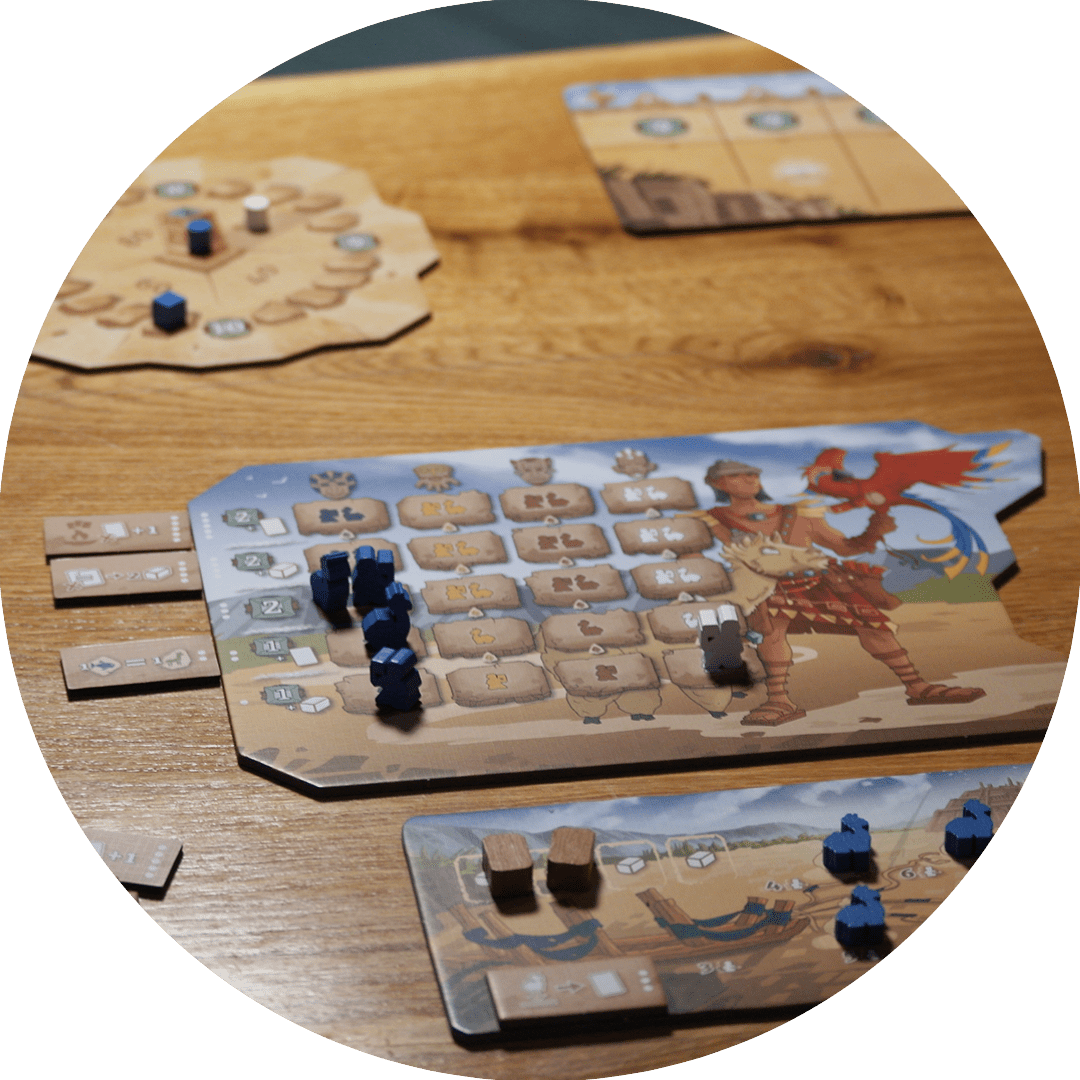Apart from the fluffy alpacas, CARAL’s greatest strength is its variability. You can therefore rely on a high degree of replayability – our chief editor Hans has meticulously ensured that no round is the same as the next. In addition to the game’s internal mechanics, the individual dynamics at the table also ensure that the game always feels fresh. I have played games that felt like a constant race to the opening of the annual ceremony. Others, on the other hand, were a constant balancing of speed and the use of the numerous action options. And all this only in the base game! With the rules at hand, you have maximum freedom to try your way through the modules to find your favourite version(s) of CARAL. For those who would like to get some inspiration and ideas, I have put together some suggestions for module use in CARAL with Hans here.



Entering the (module) world of CARAL
Playing the base game without modules is the perfect way to get a quick start into the game. Just try it out – every action has its use. You don’t have to start a professional architect’s career directly in the first round. My first game consisted of pointlessly accumulating alpacas – and it was great! If you don’t usually play much or feel quickly overwhelmed by the many action options, you have a guiding handrail in the form of the Annual Tiles and/or Status Cards. Instead of playing all over the place, you can follow the requirements of the Annual Tiles. In this way, you learn step by step how to fulfill certain goals efficiently. This year you get victory points for the most alpacas in front of the sledge? Then let’s go to the animal market! At the same time, you try to make it difficult for your fellow players to pursue the same goal. If you don’t achieve your goal and end up as the loser of the Annual Tiles, you at least become the starting player and can move the architect in the coming year: a powerful role that ensures that you can quickly catch up again. The Status Cards also give you a rough direction for your actions. Status Cards can be fulfilled for victory points at any point in the game – but only by one person! So grab them while you can. Experienced players can add the Anaconda to add a little more spice to the race for the most victory points. The essence is: if you don’t play much normally, the base game is an excellent introduction. If you can’t see your goal because of all the possible actions, you can use the Annual Tiles or the Status Cards. If you play a lot, you can let off steam and quickly reach for the modules – it’s worth it!



Build your gaming experience
Don’t take it amiss, I have very roughly divided the board game world into archetypal groups here: the competitive players who would love to take the last shirt off the person sitting next to them and the harmony-loving hippies like me. Of course, the head and gut players should also feel addressed.
For a competitive game experience
CARAL in itself is a multi-layered race. If you want even more competition or want to make life difficult for your fellow builders, you should reach for the Anaconda and the “Whim of the Gods” Cards. It hurts to have a huge Anaconda sitting on the action square that you absolutely need – especially if you have to feed alpacas out of sheer desperation to be able to use the action anyway. If you want a competitive race for the most points, but are less inclined to nasty actions, use the Annual Tiles, the Status Cards and the Emissaries. This way you can see exactly who is ahead in which part of the game and know exactly where your opponents’ weak spots are. It will be a head-to-head race on several fronts, I promise!
For peaceful rounds
If you don’t want to put the harmony of the house at risk or if you have a compassionate streak, you can’t go wrong with the Annual Tiles and Progress Tiles. You can’t really do much damage here. If you are better at scoring the Annual Tiles, the loser gets control of the architect. That way there is guaranteed to be no bad conscience.
Gut player or strategist?
With its short moves, CARAL is perfect for people who don’t want to spend hours pondering their next move. For a straightforward flow of play, you can use the “Whim of the Gods” Cards, Status Cards and/or the Progress Tiles. This way you are sure to have a captivating game experience without having to calculate your plans down to the last detail. If you like strategic challenges and want to be rewarded for clever calculations, you are well advised to use the “Whim of the Gods” Cards, Annual Tiles, the Anaconda and/or the Emissaries. As you can see, the list gets longer. The more complex you want the game to be, the more modules we recommend. For CARAL experts, there is nothing to stop you from playing a game of CARAL with all modules at the same time.



Download the module recommendations
If you want to put our module recommendations directly into the game manual of your copy of CARAL, you can download our overview here:




